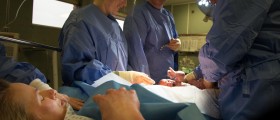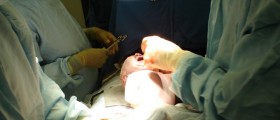
These days, a diagnosis of Cephalopelvic Disproportion is not all that rare. If a late-pregnancy ultrasound has determined that the baby is expected to be large, some OBs may jump to the conclusion that a cesarean section would be a safer option. But cases of absolute Cephalopelvic Disproportion are exceedingly uncommon, and often result from a prior pelvic injury, or from childhood malnutrition. Many women give birth to very large babies (over 10 pounds) vaginally with no problems at all. While Cephalopelvic Disproportion does exist, and some women are truly unable to give birth vaginally because their pelvis is too small to enable delivery, it is not possible to accurately diagnose CPD before a woman has attempted to give birth.
A stalled labor can be caused by a wide variety of factors other than Cephalopelvic Disproportion, and a labor that is progressing comparatively slowly should not automatically result in the conclusion that the maternal pelvis is too small. Interestingly, one study showed that 68 percent of women who received a diagnosis of "absolute Cephalopelvic Disproportion" still gave birth vaginally. Apparently, something is lacking in the diagnostic process. Unless women have a clear reason to believe that their pelvis is factually too small, an assumption that vaginal delivery is possible is highly likely to be correct.
















Your thoughts on this
Loading...